Search Results
Diagnosis
An accurate diagnosis of the type of leukemia is important. The exact diagnosis helps the doctor to estimate how the disease will progress and determine the appropriate treatment
Diagnosing acute myeloid leukemia (AML) and your AML subtype usually involves a series of tests. Some of these tests may be repeated during and after therapy to measure the effects of treatment.
Radiation Therapy
Radiation therapy, also known as “radiotherapy,” uses high energy x-rays or other types of radiation to kill cancer cells. While most blood cancers cannot be cured with radiation therapy alone, it may be combined other treatments such as chemotherapy, immunotherapy and stem cell transplantation. Radiation therapy may also be used to relieve symptoms of blood cancer and improve quality of life. For example, radiation therapy may be used to shrink an enlarged spleen, liver or lymph nodes. It may also be used to manage bone pain caused by cancer cells growing in the bone marrow.
Healthy Eating
People living with cancer may have different nutrition goals and challenges, depending on their:
Caring for Your Child During Treatment
Preparing the HomeThe following changes to your home may make life easier and safer for you and your child:
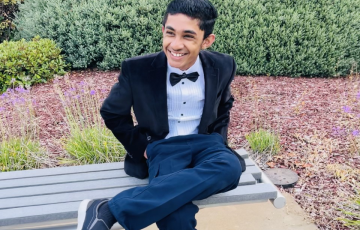
Aryan
Hello, my name is Aryan. I am 13 years old. I was almost five years old when I first got diagnosed with cancer. It started as a normal summer like always, and we were planning to go somewhere. My dad was always traveling because of work, so it was just me and my mom. I would mostly spend time at my grandparents’ house because I could play games with them. One day my dad saw a bump on the back of my head, and our pediatrician told us that it was a lymph node. My pediatric doctor told my parents that it's normal, part of recovery from a fever or cough and to monitor it.
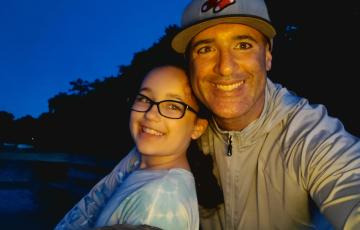
Israel
I am 39 years old, a father of two boys and one girl ― Abdias, 12 years old; Ester, 10 years old; and Ben, 9 years old ― and a husband to my wife Erin for almost 14 years.
On August 14, 2021, I suffered a serious knee injury playing basketball which inadvertently led to revealing I had a blood cancer called chronic myeloid leukemia (CML). Suddenly, instead of prepping for knee surgery, I was sent to the hospital and received an official diagnosis on September 9 after a bone marrow biopsy and what felt like a million tests.
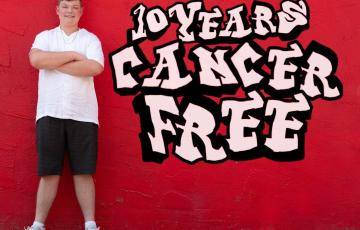
Austin
Four were spoken that day. Four crushing, breathtaking words, “Your son has cancer.” My world, my life, and my dreams for my son’s future suddenly halted while the rest of the world kept going on around us on May 14, 2011. Only days before, I was deciding what theme to have for his third birthday party and what outfit he would wear for his pictures. Days later, my husband and I were signing consents for the specific protocol of poison that would be pumped into Austin and having to digest the laundry list of possible side effects.

Jamiee
During COVID, I completed my graduate degree. This was in 2020, and things started to look up. Not only did I become the first member of my family to achieve a graduate degree, I also did it pregnant. I welcomed my second child in 2020, two months after graduation. In 2021, once the world settled a bit, I began to go on a healing journey where I started working on my mental and physical health. It was amazing, I finally began feeling great about myself, had the stamina to enjoy my children, and was in a career I loved.
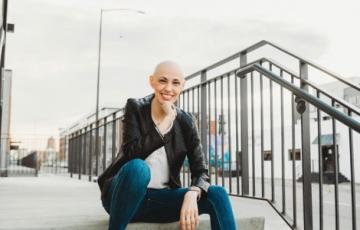
Lyndi
In March 2019 I began feeling off...I didn't know what it was. I thought perhaps it was a loss of relationship that broke me to my core, or that fact that an old friend had asked me to be kidney donor for someone I had never know. I agreed to be tested to see if I was a possible match. Fast forward to October when I was tested a possible blood clot that had formed from all of this. I was having continual pain in my right shoulder blade.

Ariana
In the blink of an eye, our lives can crumble underneath us like a tsunami drowning the life out of a city. Many of us unknowingly stand on the edge of an eroding cliff and one slip away from relinquishing our most desired aspirations. At 19 years old, I stood inches away from the edge of that cliff when I was diagnosed with essential thrombocythemia (ET). This was one of the most defining moments in my life that propelled me into a tenacious desire to become a physician capable of fully understanding the fragility of life.
Stem Cell Transplantation
The goal of stem cell transplantation is to cure the patient’s cancer by destroying the cancer cells in the bone marrow with high doses of chemotherapy and then replacing them with new, healthy blood-forming stem cells. The healthy blood stem cells will grow and multiply forming new bone marrow and blood cells. There are two main types of stem cell transplantation. They are
CML Phases and Prognostic Factors
CML has three phases. The phase of your chronic myeloid leukemia (CML) plays a large part in determining the type of treatment you'll receive. Doctors use diagnostic tests to determine the phase of CML. Determining the CML phase is based primarily on the number of immature white blood cells (blasts) in the patient’s blood and bone marrow.
Phases of CMLChronic Phase. Most patients are diagnosed with CML in the with chronic phase of the disease.
People with chronic phase CML:
CML in Children and Young Adults
Most cases of CML occur in adults. From 2012 to 2016, approximately 2 percent of all cases of CML occurred in children, adolescents and young adults less than age 20.
Myeloma Staging
Doctors use imaging and laboratory test results and bone marrow examination findings to determine the extent of disease. This determination is called “staging.” Staging helps your doctor predict the myeloma's progression and develop a treatment plan.
Stem Cell Transplantation with High-Dose Chemotherapy
High-dose chemotherapy and stem cell transplantation are important parts of treatment plans for eligible, recently diagnosed myeloma patients. One of the following types of transplants may be used:
Are Clinical Trials Safe?
U.S. clinical trials are designed to give patients the safest, potentially most effective clinical therapies. Clinical trials are conducted once researchers have shown in the laboratory and in animal research that a particular study treatment has a good chance of offering better outcomes for people with a specific disease.
Patients enrolled in cancer clinical trials are never treated as “guinea pigs.” In fact, patients are given either
Peripheral Neuropathy
Cancer treatment, or sometimes the disease itself, can cause peripheral neuropathy (PN) — damage to nerves of the peripheral nervous system, which transmits information from the brain and spinal cord to every other part of the body. Peripheral neuropathy can be caused by:
Choosing a Treatment Center
Selecting a cancer treatment center may depend on several factors including your specific diagnosis, location and insurance coverage. You will want to choose an accredited treatment center with the medical expertise to provide the type(s) of treatment you will need.
Home Care
You don't necessarily need to depend on inpatient medical facilities to meet all your healthcare needs. If your condition allows, you can get the quality care you need at home and avoid the inconveniences of hospitals, nursing homes and rehabilitation facilities.
Managing Insurance and Expenses During Illness
It's important to resolve financial issues before they become a source of increased stress or limit your access to needed treatments, prescription medications or support services. Therefore, discuss payment options with members of your healthcare team or the treatment centers' patient financial services department. Patients and providers can work together to devise ways to reduce costs without compromising treatment. Ask your providers about:

Jelien
Jelien started showing signs in early July of 2018. She had bruises and cuts that were taking too long to heal. In November, she kept spiking fevers with no other symptoms, and the doctor suggested giving her Motrin and switching to Tylenol. In December, during her well visit, Jelien’s bloodwork came back with slightly low counts, but her hemoglobin was too low. She was admitted to the hospital for a day for observation, and her counts were recovering. She had a follow-up and was cleared.
Drew
One thought that never crossed my mind as a parent was the fear of a cancer diagnosis for my five year old son.
A few months shy of his 6th Birthday, Drew had very typical cold symptoms, but they were persistent and he was extremely fatigued. After a two visits to his primary care physician, come over the counter medicines and finally a trip to Urgent care, we had a lot of questions but no answers. My husband took him to his primary care Dr on Monday and we insisted on a blood test.
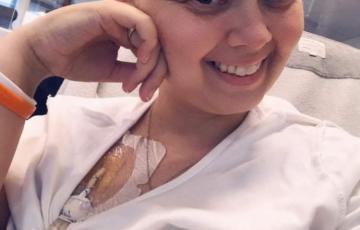
Amanda
I am now a two-time acute myeloid leukemia (AML) survivor. When I was diagnosed with AML, it was an absolute complete shock. At the time of my diagnosis, I was a stay-at-home mom to my then three-year-old son. In a matter of a few hours and three words, “You have cancer,” my life completely turned upside down.

Gwendolyn
Gwendolyn describes herself as a wanderlust who never likes to let the grass grow under her feet. After college, she moved from her hometown in Florida to Houston and spent the next few years moving around Texas for work. She started her new life in Texas where her son, Sterling, was born and raised. She loves traveling, but following a trip to Belize, she started to notice white spots on her skin and other strange issues happening with her health. After doing some research on her own and going to the doctors, she was told she likely had lupus.

Teresa
I was diagnosed in 2009 with chronic lymphocytic leukemia (CLL). Upon diagnosis, perhaps the greatest shock was becoming aware that I knew so little about cancer, so little about the medical system, and how one needs to go about a process of self-education regarding their disease.
My diagnosis occurred at the Simon Cancer Center, a part of the Indiana University Health System. I was fortunate to have a neighbor who is a nurse practitioner at this cancer center. She intervened when she found out that a routine shoulder MRI revealed multiple enlarged lymph nodes.